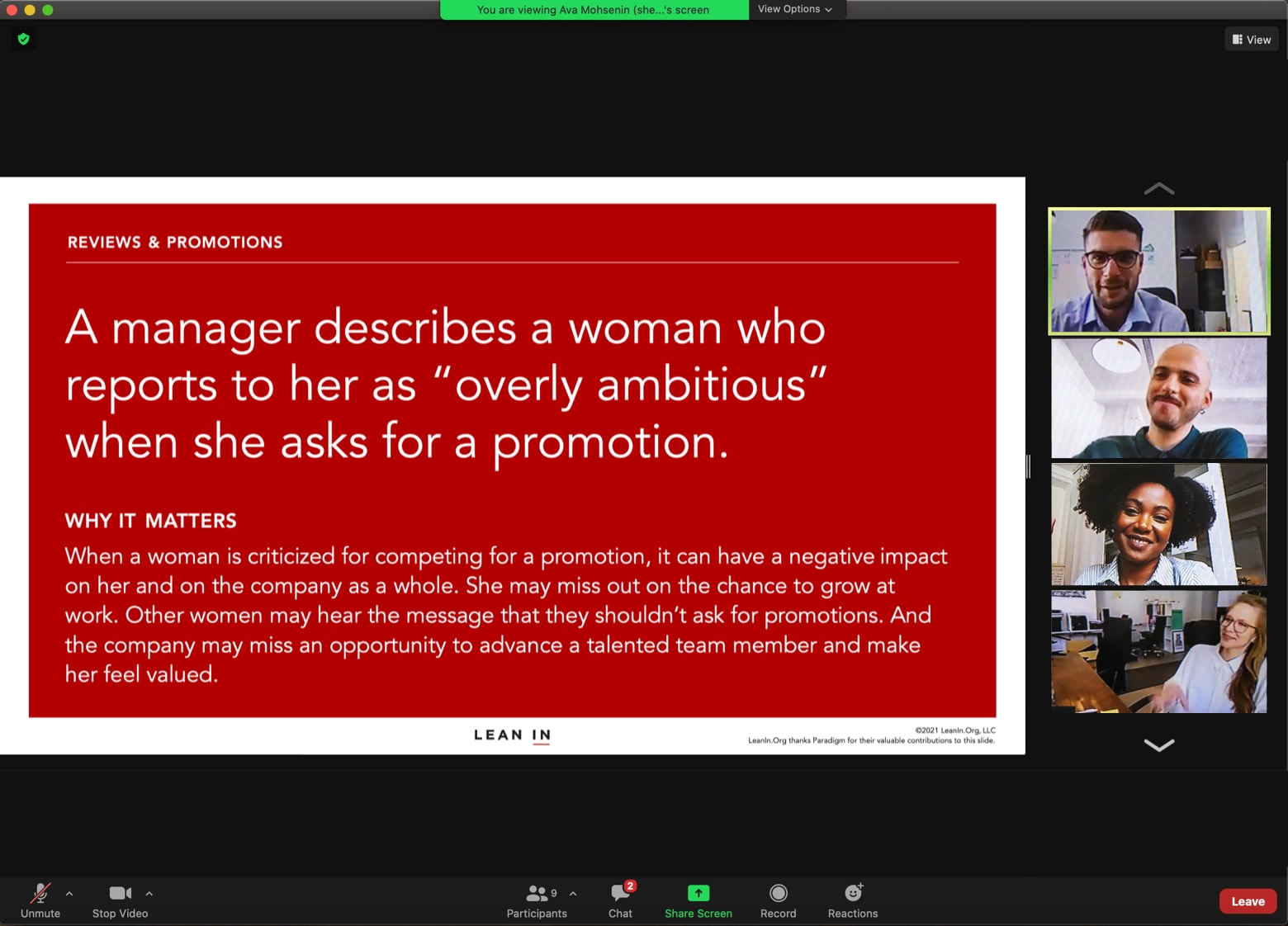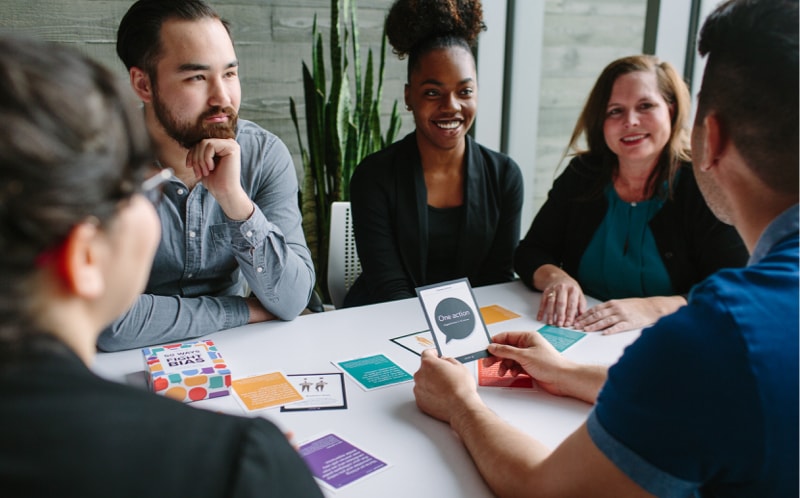
50 Ways to Fight Bias
A training activity that helps you combat the biases women face at work.
Bring 50 Ways to Your Company, Lean In Circle, and Beyond
We’ll give you everything you need to run a 50 Ways to Fight Bias workshop. Download our Getting Started Guide to run an introductory session or explore the card sets.
You can also join our free company webinar where we'll walk you through how to host a 50 Ways to Fight Bias workshop.
What makes 50 Ways to Fight Bias effective
Specific and interactive:
The training program is rooted in very specific examples of workplace bias because research shows bias training is more effective when it's tied to realistic and familiar situations, as opposed to more general concepts.
Rooted in research:
The training is based on decades of research — including our own. We teamed up with academic experts and company leaders to ensure the program is engaging, actionable, and drives meaningful change.
Tailored to suit any group’s needs:
You can choose from one of the sets of cards curated for different audiences and workplace interactions — for example, we offer a set focused on everyday interactions at work and one on bias in reviews and promotions.
Designed to engage all employees:
Many bias trainings risk leaving employees feeling disconnected or alienated, but 50 Ways uses research-backed techniques that generate real, positive outcomes. Grounded in relatable workplace scenarios, this highly interactive and action-oriented program avoids accusations or blame, driving deeper engagement and employee commitment to making lasting change.
How it works
50 Ways is optimized for in-person or virtual workshops where participants learn about bias, discuss specific examples, and get expert recommendations on what to do. Here’s how the program works in a few simple steps — and you can explore our program materials to learn more.
Set the tone
All 50 Ways workshops begin by level setting with participants on how to encourage an open and respectful discussion.
Introduction to bias
Participants watch a short video that explains the common types of biases that women can face.
Watch the 50 Ways videoGroup activity
Before the training workshop, the moderator selects the set of cards that will resonate with the participants. In the session, participants break into small groups to go through the cards together. On each card, they’re introduced to a specific example of workplace bias—and why it matters. They take a few minutes to discuss the situation and brainstorm solutions for interrupting the bias. They then learn what experts recommend they do in that situation, along with a short explanation of what's behind the bias.
Explore the 50 Ways cardsCommit to action
As the activity wraps up, participants commit to take One Action to fight bias based on what they’ve learned.







![Back of card: What to do - When a woman gets interrupted, speak up. You might say, “I’d like to hear the rest of [Name’s] thoughts” or “[Name] raised an important point. I’d like to consider it further before we move on.” If you’re leading a meeting, reduce interruptions by following an agenda and asking people to contribute in a structured way. You might say, “Let’s go around the room and get everyone’s ideas.” You can also invite individual women in the room to contribute their opinions.](https://media.sgff.io/sgff_r1eHetbDYb/2025-02-07/1738945960939/50_Ways_card_carousel_web_4B.png)

![Back of card: What to do - Speak up. Say you’d like to hear your coworker’s point of view, and push back on the suggestion that she’s too emotional or irrational. You could say, “[Name] doesn't seem heated to me. I think she's making some really great points. [Name], can you go on?"](https://media.sgff.io/sgff_r1eHetbDYb/2025-02-07/1738946125040/50_Ways_card_carousel_web_5B.png)
































